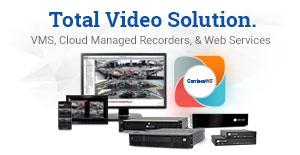Breaking Down Integrators' Top Challenges - & their solutions - With DVRs & NVRs

by Derek Rice, SDM Magazine contributing writer
The advanced functionality of today's video surveillance recording systems comes with a degree of complexity in the configuration and intallation.
Back when video surveillance relied on tape-based VCRs for recording, deploying these systems was fairly straightforward. You simply connected the camera or cameras directly to the VCR and - voila - everything was captured on tape. Retention depended on how often you wanted to switch out the tape and how much cabinet space you had to store tapes.
Today's surveillance systems are much, much more complex, offering an array of functionality that was unheard of just a couple of decades ago. Deploying and configuring NVRs - and to some extent DVRs - requires not only a certain degree of networking know-how, but also a number of other factors, including careful calculation to determine how much storage is required.
When it comes to working with these video recording solutions, there are a number of challenges security integrators may face, the most common of which are discussed here.
(Read complete article online at SDM Magazine here)
Excerpt:
"Having analytics on the DVR or NVR that can warn in advance of upcoming performance issues, disk capacity, and disk health is a major tool to increase system reliability to avoid having lost video, even on systems with RAID protection," says Jeff Whitney, Vice President of Marketing, Arecont Vision Costar, Glendale, Calif. "Several manufacturers offer this capability in varying degrees of predicting and monitoring DVR and NVR system or disk issues and automatic alerting, which will continue to improve as future products add effective AI or machine-learning technology."
With this in mind, integrators should absolutely be looking for these types of features when selecting recording solutions for their customers, Whitney says.
"DVRs were pretty much dumb devices when first rolled out," Whitney says. "Today's best platforms are very different. They offer remote access to both video and to perform administrative or diagnostic tasks, a major cost and time saver by eliminating trips to the customer site or remote location to dramatically reduce truck rolls. Selecting a DVR/NVR platform that includes this capability is a necessary starting point whenever multiple sites will be using the same surveillance platform."
















